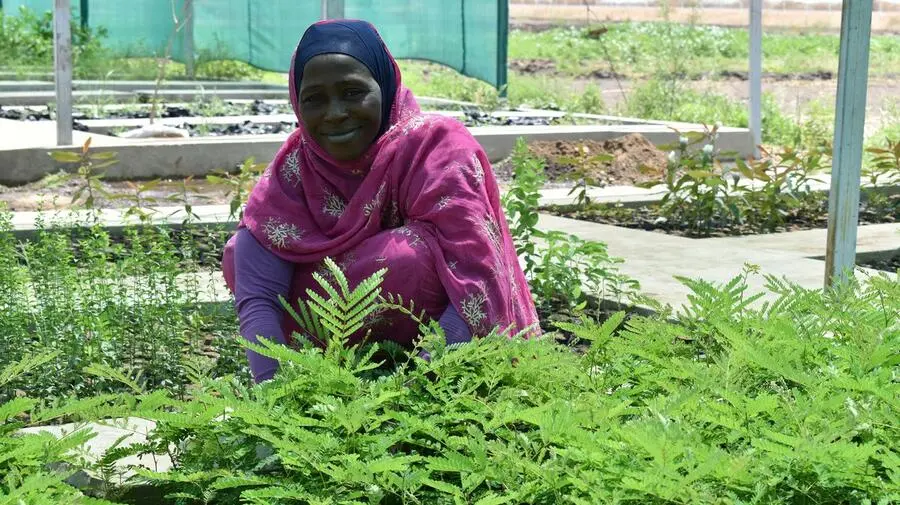
Refugees and their hosts are working together to plant a million trees as part of a massive reforestation campaign in Sudan's White Nile State.
A thick rubber pipe runs more than two kilometers from the White Nile in Sudan, pumping its contents into a large reservoir in the town of Al Jabalain, where thousands of saplings grow.
This nursery has the capacity to produce up to 200,000 young trees per year. It is the result of a partnership between the country's forestry agency, the Forest National Corporation (FNC) and UNHCR, the United Nations Refugee Agency.
The project began in 2017 and is located in a semi-arid area, which has been largely deforested for firewood and construction materials. It made it possible to plant around a million trees of four different species of acacias, spread over 2,500 hectares of land.
Geal Deng Nyakong, a South Sudanese refugee, works at the nursery. She has seen first-hand how deforestation has damaged the environment she has lived in since fleeing violence in South Sudan in 2014.
“I joined this project to earn some money for food and some clothes, and to learn new skills on planting trees,” says Geal Deng Nyakong, who hopes to use these skills when she returns in its country of origin or for future work in nearby citrus plantations.
There are around a quarter of a million South Sudanese refugees in White Nile state, which has a population of more than 1.7 million.
Geal Deng Nyakong, and thousands of women like her, often spend up to eight hours a day traveling to remote forest areas to find firewood, a commodity that is becoming scarce. These journeys on foot make them vulnerable to sexual violence.
“This promotes safe access to a sustainable source of cooking fuel, while combating environmental issues. »
Imadeldin Ali, a UNHCR livelihoods worker based in Kosti, expects that this reforestation campaign, in addition to boosting sustainability, will create a safer environment for vulnerable refugees and local populations.
“It has also brought firewood production closer to refugee camps, promoting secure access to a sustainable source of cooking fuel, while combating environmental issues through natural resource management,” he explains.
In the White Nile region, deforestation is a particularly serious problem. In addition to firewood, refugees cut wood and poles in devastating quantities to build their shelters. In a region where there are few paid jobs, some sell part of their food rations to buy firewood and charcoal.
UNHCR’s engagement with the FNC has contributed to the rehabilitation and management of forests, both for the provision of cooking fuel and for long-term environmental protection.
“This year, our project consists of creating squares of wooded land or small forests around each of the nine camps in this state to replace the trees cut down by refugees over the years,” explains Imadeldin Ali.
Another challenge is posed by the semi-arid climate with summer temperatures reaching 48 degrees Celsius, making cultivation difficult. To strengthen the seedlings, UNHCR and FNC, in partnership with Innovation Norway, a development agency of the Norwegian government, and the Dutch Land Life Company, are experimenting with their crops in cocoons at the nursery where Geal Deng Nyakong works.
A cocoon is a biodegradable “incubator” designed to strengthen a seedling during its first year by providing water and shelter while stimulating a healthy, deep root structure, through a subsurface water supply.
The cocoon stores water for about three months, allowing the seedlings to survive the rainy season. This results in independent trees that can survive harsh conditions. Cocoons are said to improve the survival rate of seedlings by 75 to 95%.
Seen
Like
Comments
Fans